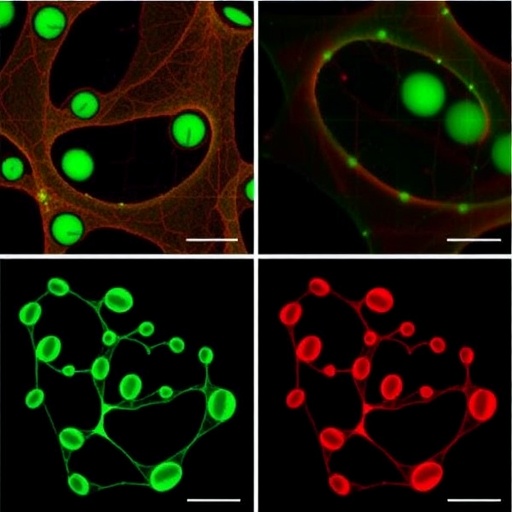New Research Challenges Assumptions Linking Prenatal Opioid Exposure to Autism and ADHD Risk
In recent years, the potential risks of opioid use during pregnancy have increasingly come under scientific scrutiny, especially concerns revolving around possible neurodevelopmental consequences for children. Opioid pain medications are commonly prescribed to pregnant individuals to alleviate various painful conditions, but their safety profiles regarding fetal brain development remain incompletely understood. A groundbreaking study led by Emma N. Cleary of Indiana University Bloomington now provides compelling evidence that questions the previously suggested direct link between prescribed opioid analgesics taken during pregnancy and elevated risks of autism spectrum disorder (ASD) and attention-deficit/hyperactivity disorder (ADHD) in offspring.
Opioids represent a class of powerful analgesics that act primarily on the central nervous system. Their utility in managing moderate to severe pain has led to their widespread use, including among pregnant individuals. However, the developing fetal brain is known to be sensitive to environmental exposures, and certain drugs may carry risks of neurodevelopmental disturbances. ASD and ADHD are complex neurodevelopmental disorders characterized by difficulties in social communication, behavior regulation, and attention control. Past epidemiological studies have hinted at increased incidences of these disorders among children prenatally exposed to opioids, creating concern among health professionals and expectant parents alike.
The recent investigation, published in the open-access journal PLOS Medicine, capitalized on Sweden’s comprehensive national health registers to analyze an unprecedentedly large sample size. The research analyzed over 1.2 million children born between 2007 and 2018 to assess ASD outcomes, alongside more than 900,000 children born between 2007 and 2015 to track ADHD diagnoses. Crucially, the study cross-referenced these health outcomes with detailed prescription records of opioid analgesics used by the mothers during pregnancy, enabling a nuanced analysis of dosage, duration, and timing of exposure.
Initial observations found that children with prenatal opioid exposure had a higher raw incidence of ASD and ADHD diagnoses compared to their unexposed counterparts. Specifically, 2.0% of children without prenatal opioid exposure were diagnosed with ASD by age ten, while rates rose to 2.9% and 3.6% among children exposed to low and high opioid doses, respectively. Similar upward gradients appeared for ADHD prevalence, lending initial support to concerns about opioid-related neurodevelopmental risks. However, these raw figures alone cannot establish causation due to potential confounding variables that may influence both opioid use during pregnancy and neurodevelopmental outcomes.
To address these complexities, Cleary and colleagues employed sophisticated statistical methods to disentangle the direct effects of opioid exposure from confounding genetic and environmental factors. They included sibling comparison analyses, which control for shared familial and genetic influences by comparing outcomes among siblings discordant for opioid exposure in utero. Such methodological rigor is essential to mitigate bias from unmeasured confounders that might otherwise create spurious associations. These approaches revealed that when family-related confounds were accounted for, the elevated risks of ASD and ADHD linked to opioid exposure diminished substantially, in some analyses disappearing entirely.
One significant limitation recognized by the authors involves the range of opioid exposures captured within Swedish prescription data. Extremely high doses or prolonged opioid use were rare due to regulatory and clinical prescribing patterns in Sweden, narrowing the applicability of the conclusions to typical or low-to-moderate exposure levels. Therefore, the study refrains from implying safety at very high opioid dosages or for extended treatment durations. Nonetheless, for the bulk of opioid prescriptions seen in this population, the findings argue against a causal relationship with increased ASD or ADHD risk.
Beyond the epidemiological findings, this research has important clinical ramifications. Pregnant individuals needing pain management encounter a dilemma: untreated pain may have adverse maternal and fetal consequences, yet potential risks of pharmacological interventions weigh heavily on decision-making. Providing clearer evidence that prescribed opioids, within typical dosage ranges, do not markedly elevate neurodevelopmental disorder risks allows healthcare providers and patients to better weigh benefits and harms. Emma N. Cleary highlights that while small risks at high exposures cannot be fully excluded, the bulk of evidence suggests no direct causal link, thus informing safer clinical pain management during pregnancy.
Co-author Ayesha C. Sujan emphasizes that the findings underscore the importance of considering upstream factors that lead to opioid use, rather than solely the pharmacological effects of opioids themselves. Conditions precipitating opioid prescriptions, such as chronic pain, mental health disorders, or socioeconomic stressors, may themselves be associated with neurodevelopmental risks. This insight calls for a holistic approach to supporting pregnant individuals who experience pain, advocating for psychosocial support and alternative evidence-based pain management strategies that integrate both pharmaceutical and non-pharmaceutical options.
The study’s scope, leveraging vast national registers and employing robust analytical frameworks, represents an archetype for future research dissecting prenatal risk factors for neurodevelopmental disorders. It demonstrates how large-scale observational data, when properly controlled for confounding, can clarify complex exposure-outcome relationships that randomized controlled trials are impractical or unethical to address. Furthermore, the multinational collaboration involving researchers from the United States, Sweden, and the United Kingdom exemplifies the value of cross-disciplinary and international partnerships in tackling pressing public health questions.
In the context of the ongoing opioid epidemic and the critical need for safe pain management practices, this research reassures that prescribed opioid analgesics, as administered in routine clinical practice during pregnancy in Sweden, do not independently drive increased risks of ASD or ADHD in children. It also advocates for nuanced interpretation of risks associated with prenatal medication exposure, avoiding unnecessary alarm while not dismissing the importance of appropriate scrutiny and caution.
Future studies would benefit from extending investigations to populations with variable opioid prescribing practices, and from integrating biological markers of exposure and genetic susceptibility. Understanding potential gene-environment interactions could further illuminate individual-level vulnerabilities or resilience to opioid-related effects on neurodevelopment. The balance between effective maternal pain control and fetal safety remains delicate, yet this new evidence brings greater clarity to one aspect of this complex equation.
As the research community continues to unravel the intricate pathways influencing neurodevelopmental outcomes, robust evidence such as this will assist clinicians, policymakers, and expectant families in making informed decisions. The recognition that observed associations between prenatal opioid exposure and ASD or ADHD risk may largely be artifacts of confounding highlights the essential role of rigorous epidemiological methodologies in public health science.
Emma N. Cleary and colleagues have thus contributed a pivotal piece to the puzzle of prenatal opioid safety, hopeful that their findings will reduce anxiety and stigma around opioid use in pregnancy when appropriately prescribed, while encouraging comprehensive care approaches addressing the broader psychosocial contexts faced by pregnant individuals with pain.
Subject of Research: People
Article Title: Prescribed opioid analgesic use in pregnancy and risk of neurodevelopmental disorders in children: A retrospective study in Sweden
News Publication Date: September 16, 2025
Web References: http://dx.doi.org/10.1371/journal.pmed.1004721
References: Cleary EN, Sujan AC, Rickert ME, Fischer F, Lagerberg T, Chang Z, et al. (2025) Prescribed opioid analgesic use in pregnancy and risk of neurodevelopmental disorders in children: A retrospective study in Sweden. PLoS Med 22(9): e1004721. https://doi.org/10.1371/journal.pmed.1004721
Image Credits: cottonbro studio, Pexels (CC0)
Keywords: prenatal opioid exposure, autism spectrum disorder, attention-deficit/hyperactivity disorder, neurodevelopmental disorders, pregnancy, opioid analgesics, epidemiology, cohort study, confounding factors
Tags: ADHD risk during pregnancyautism spectrum disorder riskcomplex neurodevelopmental disordersEmma N. Cleary researchenvironmental exposures and child developmentepidemiological studies on opioids and childrenfetal brain development concernsneurodevelopmental consequences of opioidsopioid analgesics safety profileopioid pain management in pregnancyprenatal opioid exposure studyprescribed opioids during pregnancy





